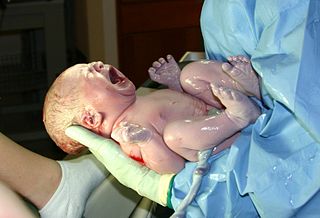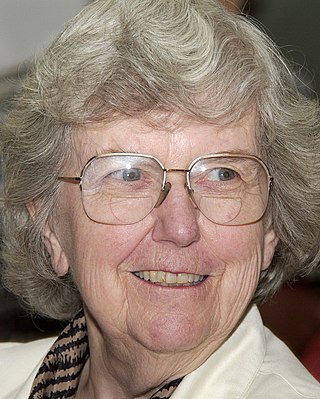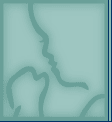
Pediatrics is the branch of medicine that involves the medical care of infants, children, adolescents, and young adults. In the United Kingdom, paediatrics covers many of their youth until the age of 18. The American Academy of Pediatrics recommends people seek pediatric care through the age of 21, but some pediatric subspecialists continue to care for adults up to 25. Worldwide age limits of pediatrics have been trending upward year after year. A medical doctor who specializes in this area is known as a pediatrician, or paediatrician. The word pediatrics and its cognates mean "healer of children," derived from the two Greek words: παῖς and ἰατρός. Pediatricians work in clinics, research centers, universities, general hospitals and children's hospitals, including those who practice pediatric subspecialties.

Spanking is a form of corporal punishment involving the act of striking, with either the palm of the hand or an implement, the buttocks of a person to cause physical pain. The term spanking broadly encompasses the use of either the hand or implement, the use of implements can also refer to the administration of more specific types of corporal punishment such as caning, paddling and slippering.

The Apgar score is a quick way for doctors to evaluate the health of all newborns at 1 and 5 minutes after birth and in response to resuscitation. It was originally developed in 1952 by an anesthesiologist at Columbia University, Virginia Apgar, to address the need for a standardized way to evaluate infants shortly after birth.
Syrup of ipecac, or simply ipecac, is a drug that was once widely used as an expectorant and a rapid-acting emetic. It is obtained from the dried rhizome and roots of the ipecacuanha plant, from which it derives its name. It is no longer regularly used in medicine.
The American Academy of Pediatrics (AAP) is the largest professional association of pediatricians in the United States. It is headquartered in DuPage County, Illinois, and maintains an office in Washington, D.C. The AAP has published hundreds of policy statements, ranging from advocacy issues to practice recommendations.

Neonatology is a subspecialty of pediatrics that consists of the medical care of newborn infants, especially the ill or premature newborn. It is a hospital-based specialty and is usually practised in neonatal intensive care units (NICUs). The principal patients of neonatologists are newborn infants who are ill or require special medical care due to prematurity, low birth weight, intrauterine growth restriction, congenital malformations, sepsis, pulmonary hypoplasia, or birth asphyxia.
JAMA Pediatrics is a monthly peer-reviewed medical journal published by the American Medical Association. It covers all aspects of pediatrics. The journal was established in 1911 as the American Journal of Diseases of Children and renamed in 1994 to Archives of Pediatrics & Adolescent Medicine, before obtaining its current title in 2013.
A medicalintern is a physician in training who has completed medical school and has a medical degree but does not yet have a license to practice medicine unsupervised. Medical education generally ends with a period of practical training similar to internship, but the way the overall program of academic and practical medical training is structured differs depending upon the country, as does the terminology used.

Pediatrics is a peer-reviewed medical journal published by the American Academy of Pediatrics. In the inaugural January 1948 issue, the journal's first editor-in-chief, Hugh McCulloch, articulated the journal's vision: "The content of the journal is... intended to encompass the needs of the whole child in his physiologic, mental, emotional, and social structure. The single word, Pediatrics, has been chosen to indicate this catholic intent."
Adolescent medicine also known as adolescent and young adult medicine is a medical subspecialty that focuses on care of patients who are in the adolescent period of development. This period begins at puberty and lasts until growth has stopped, at which time adulthood begins. Typically, patients in this age range will be in the last years of middle school up until college graduation. In developed nations, the psychosocial period of adolescence is extended both by an earlier start, as the onset of puberty begins earlier, and a later end, as patients require more years of education or training before they reach economic independence from their parents.

Mary Ellen Avery, also known as Mel, was an American pediatrician. In the 1950s, Avery's pioneering research efforts helped lead to the discovery of the main cause of respiratory distress syndrome (RDS) in premature babies: her identification of surfactant led to the development of replacement therapy for premature infants and has been credited with saving over 830,000 lives. Her childhood, mentors, drive, and education inspired Avery to be the visionary that she was. In 1991 President George H.W. Bush conferred the National Medal of Science on Avery for her work on RDS.
A fellowship is the period of medical training, in the United States and Canada, that a physician, dentist, or veterinarian may undertake after completing a specialty training program (residency). During this time, the physician is known as a fellow. Fellows are capable of acting as an attending physician or a consultant physician in the specialist field in which they were trained, such as internal medicine or pediatrics. After completing a fellowship in the relevant sub-specialty, the physician is permitted to practice without direct supervision by other physicians in that sub-specialty, such as cardiology or oncology.

The Neonatal Resuscitation Program is an educational program in neonatal resuscitation that was developed and is maintained by the American Academy of Pediatrics. This program focuses on basic resuscitation skills for newly born infants.

The Journal of Pediatrics is a monthly peer-reviewed medical journal that covers all aspects of pediatrics. It was established in 1932 and is published by Elsevier. Although it was originally affiliated with the American Academy of Pediatrics, it is currently associated with the Association of Medical School Pediatric Department Chairs.
Master of Medicine (MMed) is a postgraduate professional clinical degree awarded by medical schools to physicians following a period of instruction, supervised clinical rotations, and examination. The degree usually takes three years to complete, but may take up to four years in some countries. It is awarded by both surgical and medical subspecialties and usually includes a dissertation component. The degree may complement an existing fellowship in the chosen specialty or be the sole qualification necessary for registration as a specialist.
David Gordon Nathan is a pediatrician and hematologist. He is known for his authorship of Nathan and Oski's Hematology of Infancy and Childhood, a standard reference in pediatrics, currently in its seventh edition. Nathan remains an author on the current edition. Now retired, he was Robert A. Stranahan professor of pediatrics at Harvard Medical School and served as president of the Dana–Farber Cancer Institute. He was born in Boston.

The American Board of Pediatrics (ABP) was founded in 1933. It is one of the 24 certifying boards of the American Board of Medical Specialties (ABMS). The ABP is an independent and nonprofit organization. The ABP's mission is to advance child health by certifying pediatricians who meet standards of excellence and are committed to continuous learning and improvement.
Lala Suraj Nandan Prasad (1914–2009) was an Indian pediatrician and a former professor of pediatrics of the Patna Medical College and Hospital whose efforts were reported behind the establishment of the department of pediatrics and the development of the children's ward into a 250 bedded Children's Hospital at the institution. He was the founder president of the Indian Academy of Pediatrics when the organization was formed in 1964 though the merger of erstwhile Indian Pediatric Society and the Association of Pediatricians of India. The Government of India awarded him the fourth highest Indian civilian award of Padma Shri in 1974.
Shantilal Chhaganlal Sheth (1912–1990) was an Indian pediatrician and the president of several medical institutions including the Medical Council of India, the apex body for matters related to medical administration and education in India. An honorary surgeon commander at the Indian Navy, he served as the honorary physician to the President of India. The Government of India awarded him the third highest civilian honour of the Padma Bhushan, in 1972, for his contributions to medicine.

Hassenfeld Children's Hospital (HCH) at NYU Langone is a pediatric acute-care children's hospital located on the NYU Langone Health campus in Manhattan, New York. Hassenfeld Children's Hospital has 102 pediatric beds and is located in the Helen L. and Martin S. Kimmel Pavilion. It is directly affiliated with the pediatrics department of the New York University Grossman School of Medicine. The hospital treats infants, children, teens, and young adults aged 0–21, with some programs treating up until age 25. While not a trauma center, Hassenfeld Children's Hospital contains the KiDS Emergency Department to treat children with injuries.









